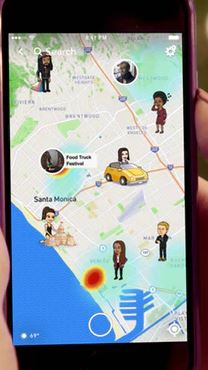

💛 Yellow Heart Emoji: Congrats, they’re your Snapchat Best Friend! (Defined by how many snaps you exchange - does not include group chat messages or texts.) 🌟 Glowing Star Emoji: They’ve replayed a snap you sent to them sometime in the past 24 hours. 👶 Baby Emoji:You’ve recently added them as a friend!

Here’s a quick guide to deciphering what snapchat emojis mean!

Speaking of emojis … there’s plenty of other ones you might see next to a friend’s name in your inbox. It’s one of the ways that Snapchat fuels the addictive nature of their app, keeping you checking it multiple times a day. Streaks can hold serious stakes for some people - if you don’t check your phone one day, you could lose weeks or months of streak with a friend. Group chats and direct messages do not count as keeping your streaks up. The streak emoji only counts images between two people. What’s that fire emoji, and why is it next to your friend’s info in your inbox? That’s the streak emoji, meaning you’ve exchanged snaps with this person for at least three days in a row. Privacy is not guaranteed online, even if an app seems designed to make interactions private. The temporary nature of messages and photos may be appealing, but there is nothing to prevent the receiver from taking screenshots of your messages and snaps. Warning: Be careful what you share on Snapchat. You can also set messages (not snaps) to remain visible if someone saves them to the chat log. You can set messages and snaps (photos) to disappear immediately after they’re seen or remain visible for 24 hours. Be careful who you accept as your friend on Snapchat. The downside? If you post it anywhere public, you run the risk of being added by total randos. Snapchat generates a QR code unique to your profile, which makes it easy for people to add you to their friends list. A Quick Guide re: How to Use Snapchat Adding friends It’s not in the DSM-5, but plastic surgeons have seen a widespread statistical increase in requests for cosmetic plastic surgery, often credited to the desire to look better on social media, or more like their filtered image, regardless of physical consequences (think the buccal fat removal trend). There is also an unofficial subsection of body dysmorphia, Snapchat dysmorphia, where people feel uncomfortable looking at their real face, expecting what they see on the app instead.


 0 kommentar(er)
0 kommentar(er)
